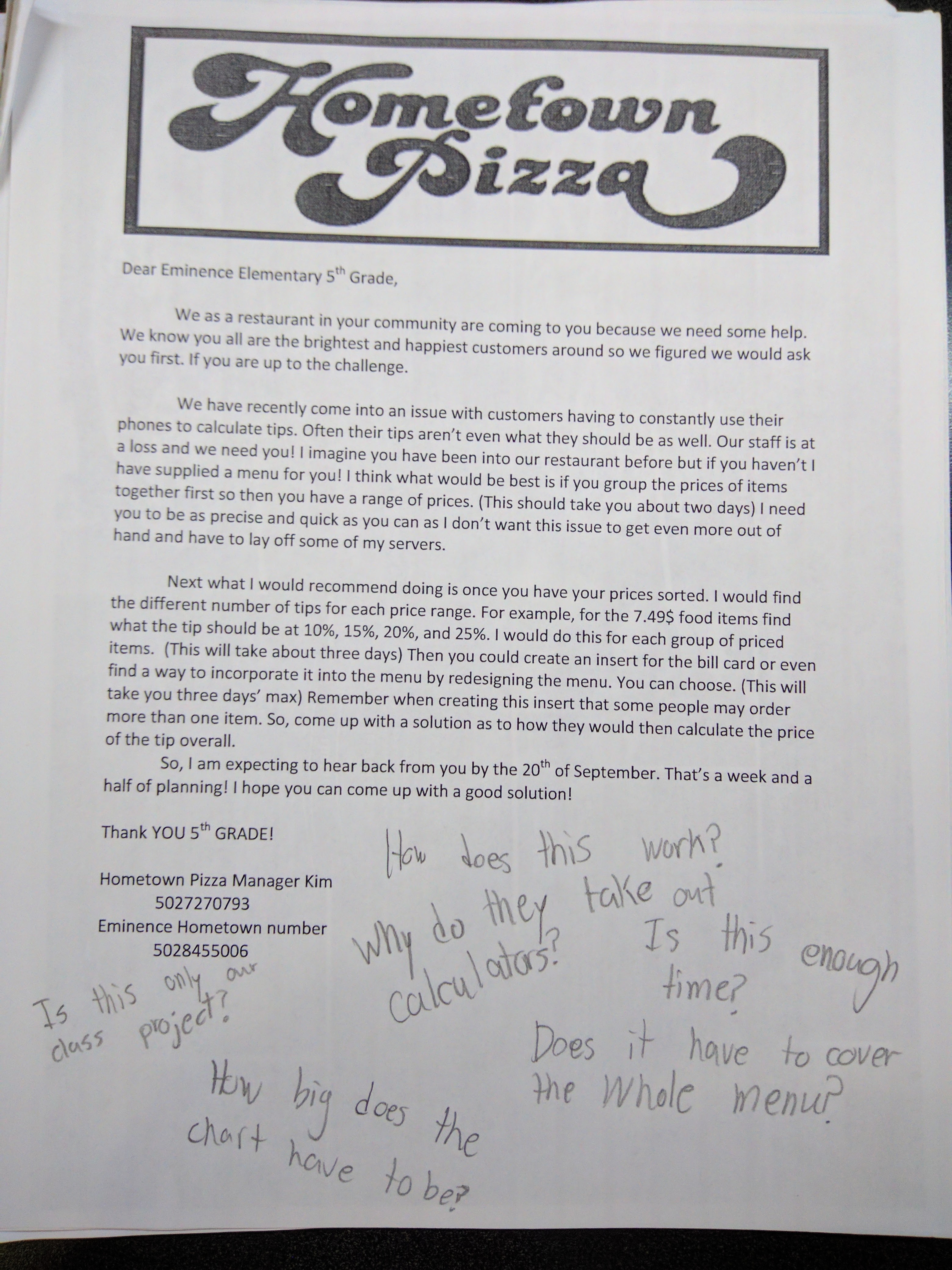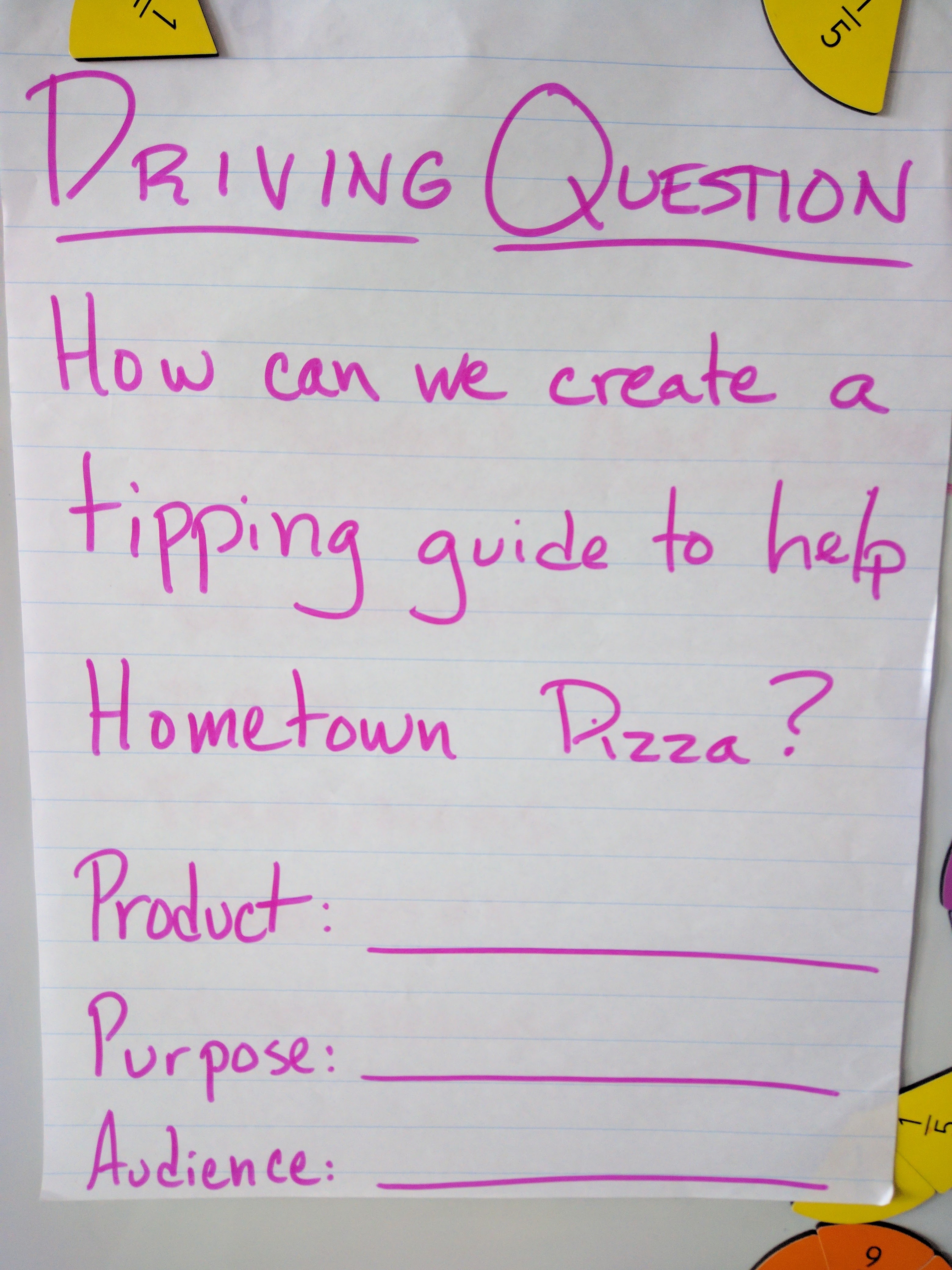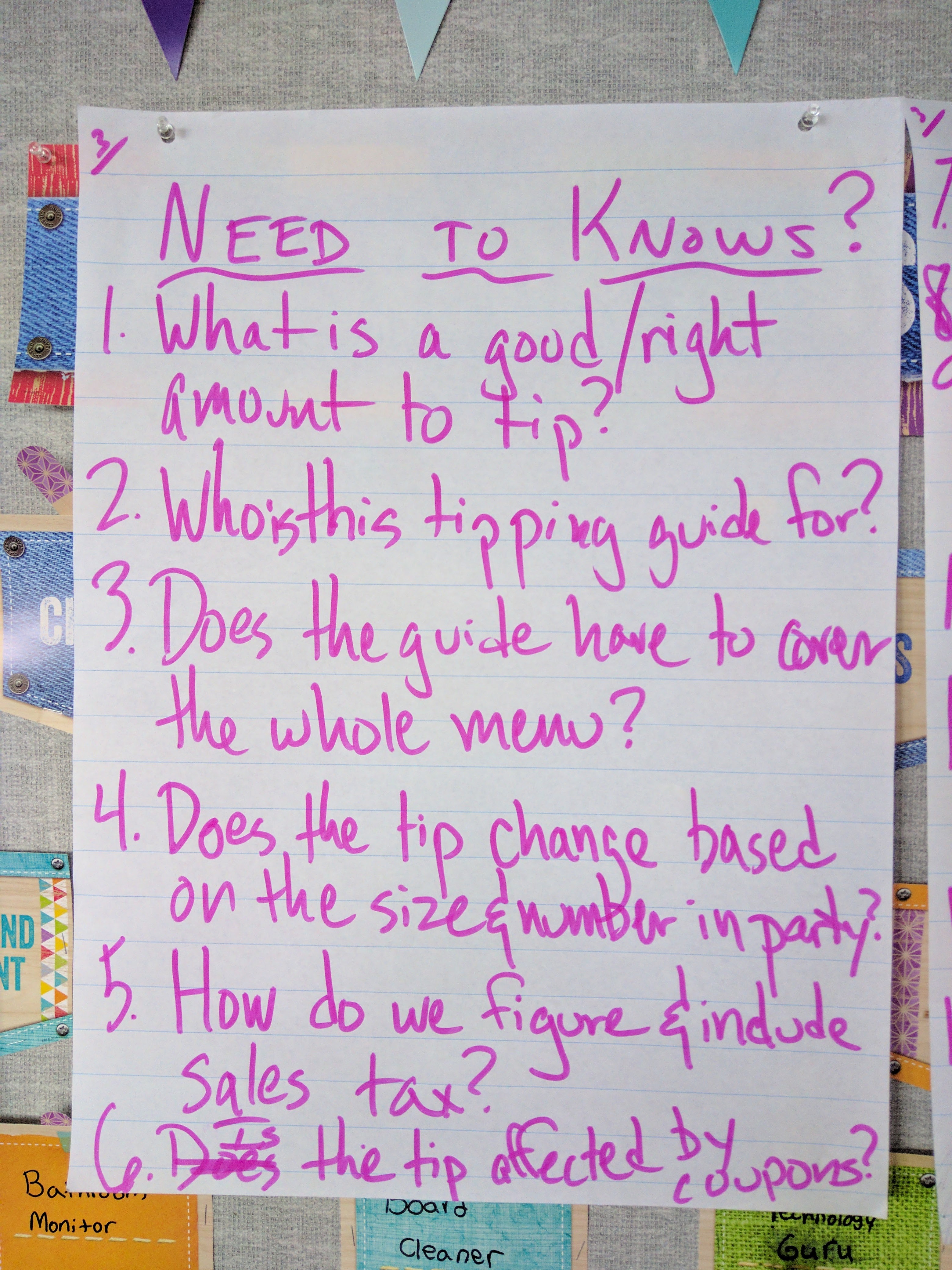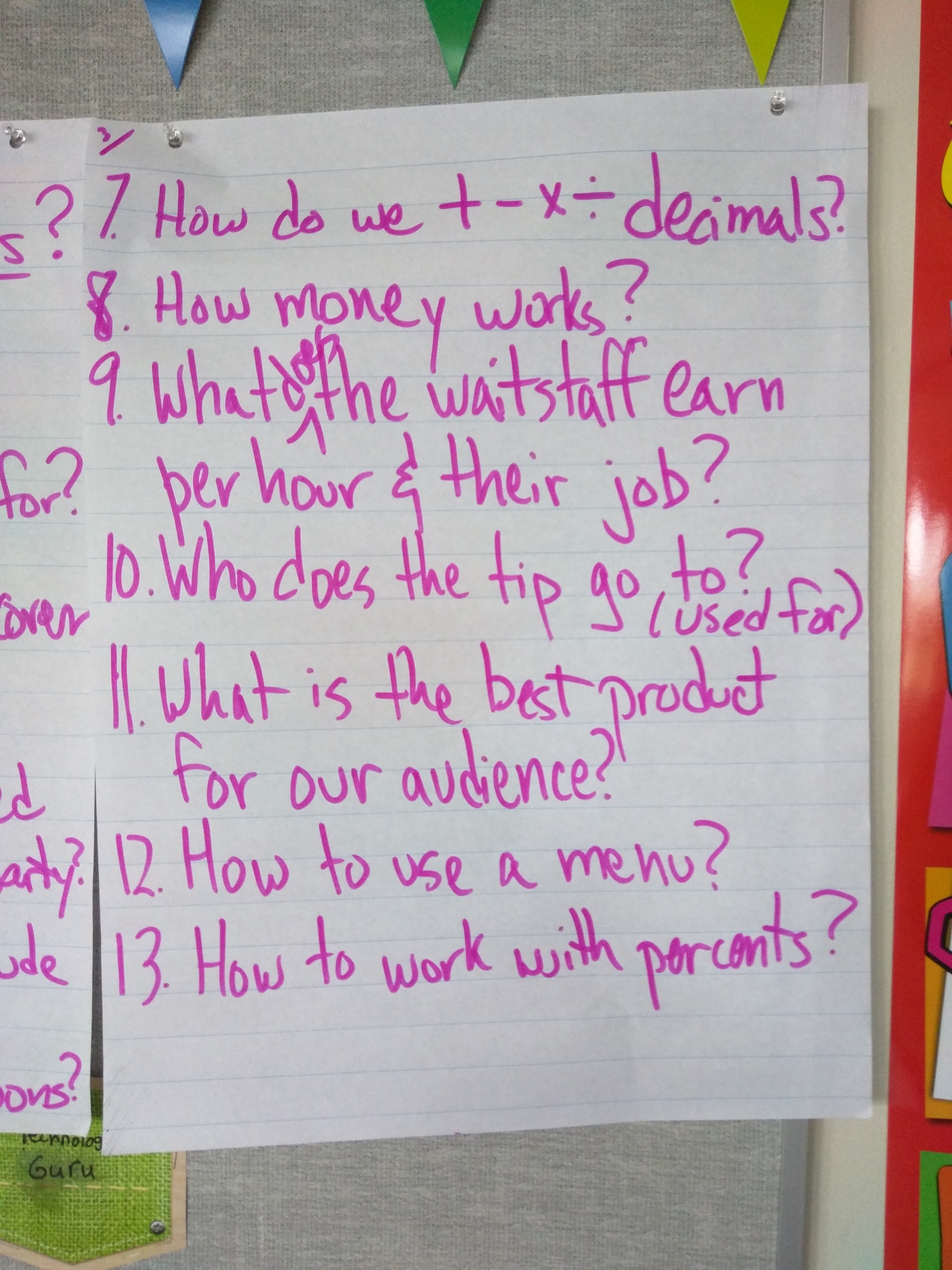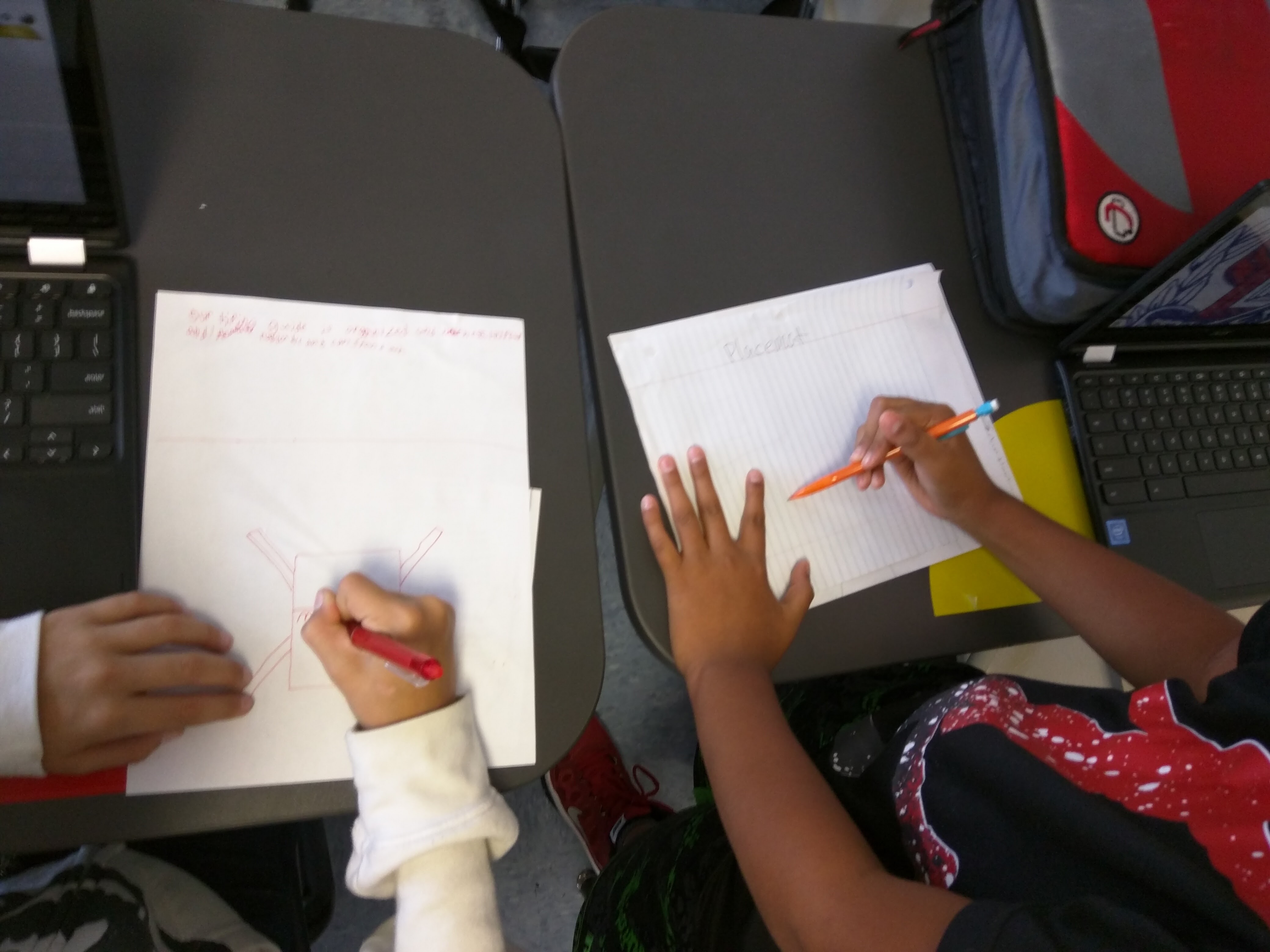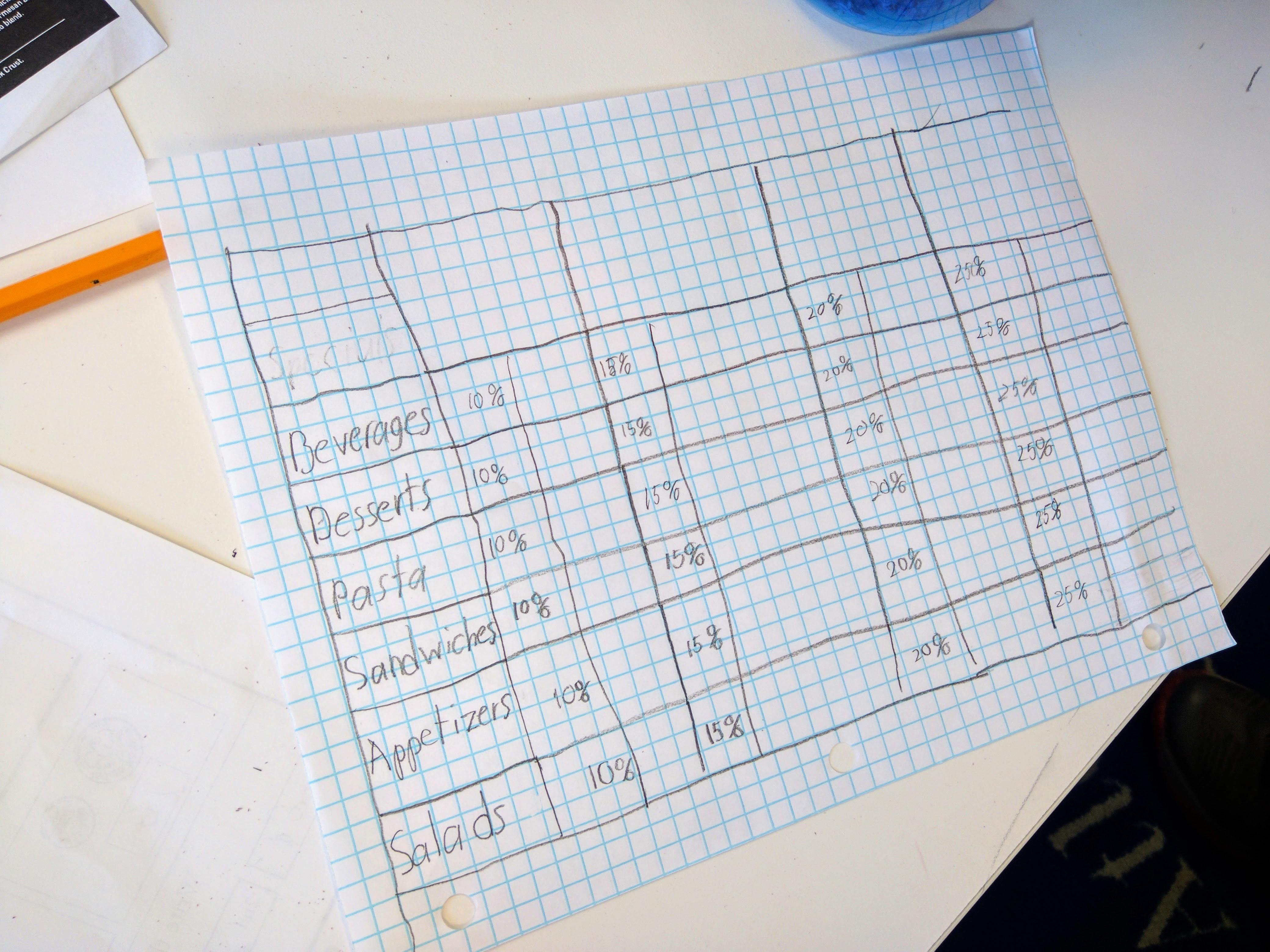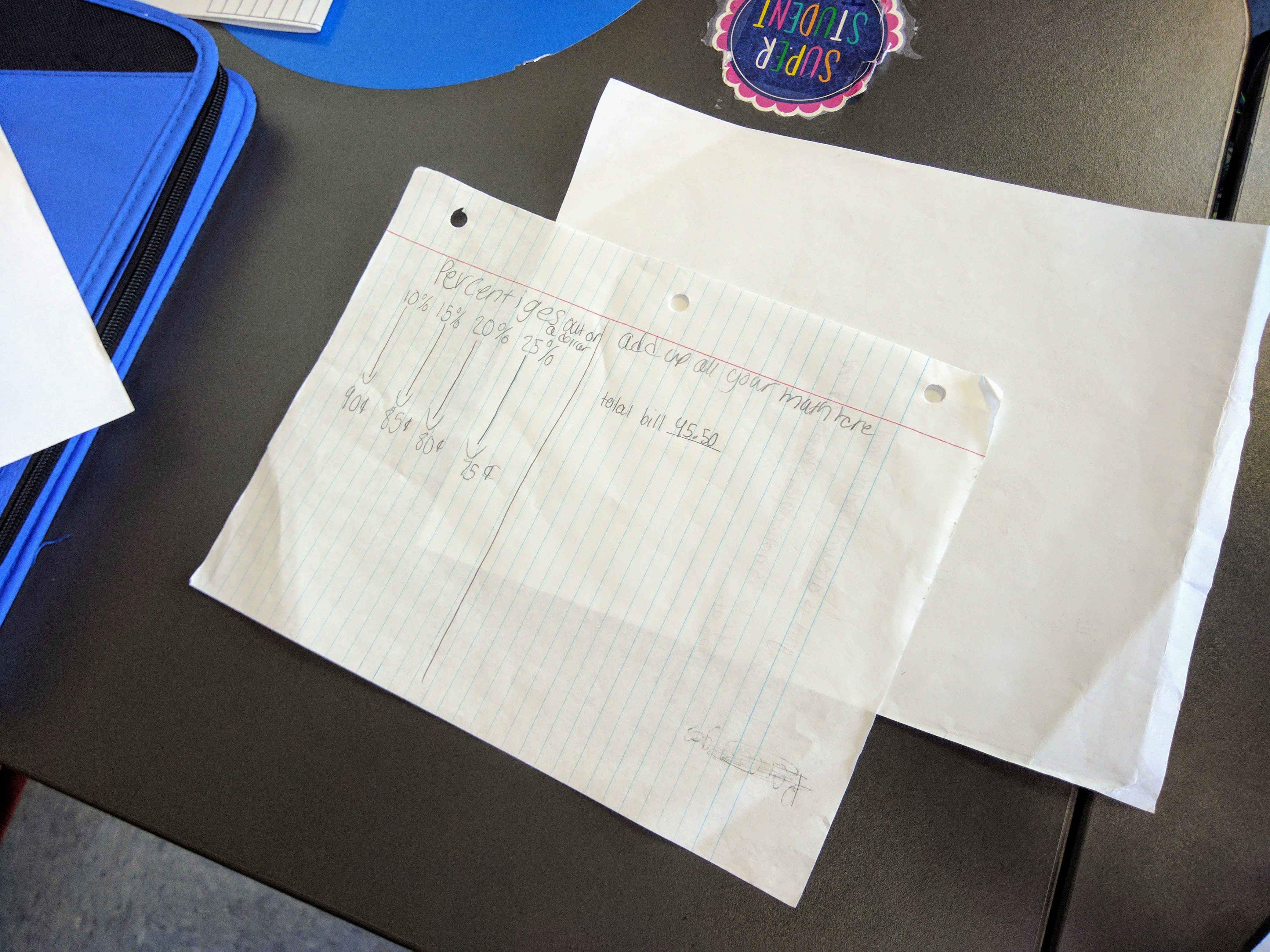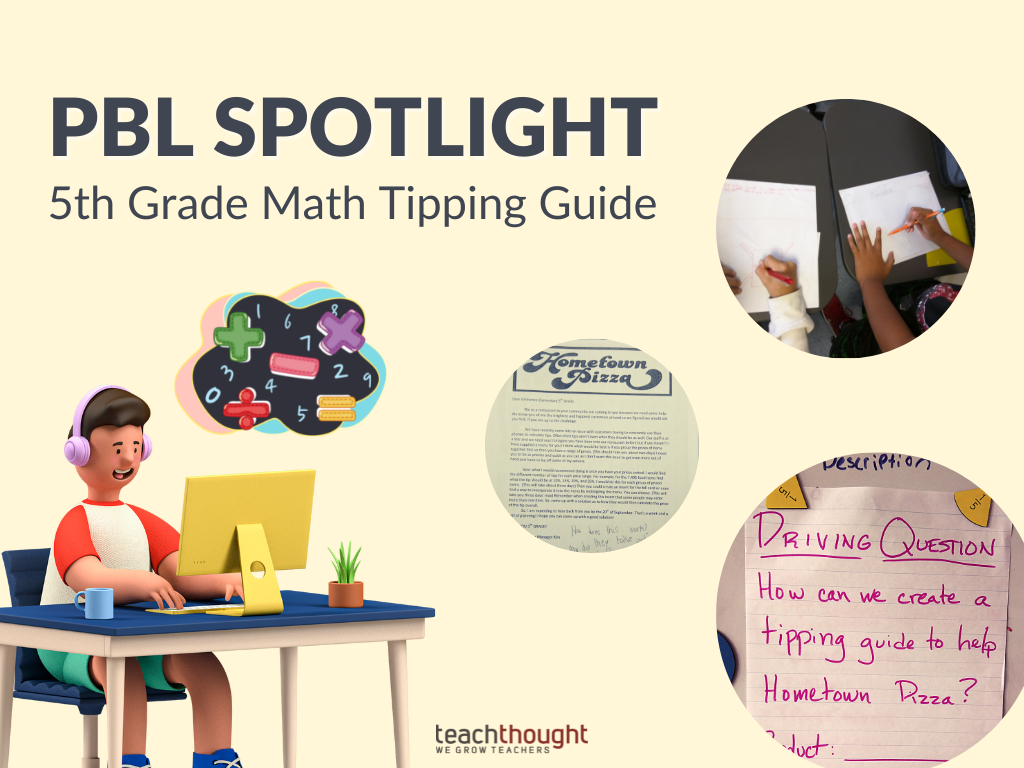
PBL Spotlight: 5th Grade Restaurant Math Tipping Guide
contributed by Drew Perkins
Every year since their kindergarten years I have extended my offer to teachers of my daughters to help out in any way they might find useful. Some of them have taken me up on my offer and asked me to chaperone a field trip or help with some minor classroom activities on special occasions, and I was happy to help.
But I was ecstatic in 2017, when my oldest daughter’s 5th-grade teacher, Kristen Rowling (now Taylor) asked me to collaborate on some PBL planning and co-teaching. What we came up with together was a relatively short project that incorporated an authentic audience and a product that helped her contextualize a need to learn how to mathematically work with decimals and percentages in meaningful ways.
See also 10 Teacher Resources For Lesson Planning Templates & Tools
This project isn’t meant to serve as an exemplar–for that please see our Straw Project Exemplar. This project is meant to show a glimpse into a PBL experience implemented by a first-year teacher.
I often advocate for teachers new to PBL to start small, focus on the foundational pieces of PBL we call ‘pull teaching,’ and then reflect before planning more ambitious PBL efforts. What this project description is meant to illustrate is how we can design and implement relatively simple learning experiences that help develop the problem-solving skill of inquiry along with foundational (math in this case) knowledge and skills.
Planning
Our first step was to identify the content knowledge and skills we wanted students to think about and learn. In this case, we used Common Core Math Standards since it was prior to Kentucky’s adoption (2019) of their current math standards. With that in our sights, we discussed ways in which those math standards, working with decimals and percentages, show up in the world outside of school.
As we settled on the idea of customers using those math skills to figure out what amount to tip after a meal, we could plan out the intended timeline and sequence with planned lessons and assessments. We also needed to look for local restaurants that might serve as an authentic audience.
View: 5th Grade Restaurant Tipping Guide In-Depth Project Planner
One challenge that can arise in PBL planning is finding authentic audiences, actual people, who are willing to take their time to participate. Thankfully in this case the manager of the local Hometown Pizza restaurant was willing to engage and quickly created the Entry Event video (remember the video quality of our phones in 2017?) below. This video accompanied the Entry Document which asked the students to create tipping guides to help their customers. As you can see, this Entry Document also clarifies some of the timeline, expectations, and parameters of the project.
Implementation
With the project launched it was time to ask the students to engage with the challenge with some annotation of the Entry Document and the generation of questions they would need to know and learn in order to answer the Driving Question. This is where the teacher, and I was fortunate to help with this in her classroom, begins to pull out from students the content, knowledge, and skills in the form of questions.
Driving Question: How can we create a tipping guide to help Hometown Pizza?
This process required some manipulative facilitation on our part for two reasons. Students unfamiliar with this process often struggle to generate a Need to Know list until they’ve developed that skill and mindset. They also might need adult help in thinking critically about the needs of a project and until they encounter some of the steps of the project may not yet realize they need to know certain things. Teachers sometimes think they’re not supposed to help with this process but it is a great opportunity to model inquiry and thinking skills for students.
Once the initial list of NTK questions was created, we set out to teach the content necessary to answer or resolve them. Teachers familiar with KWL charts might recognize some similarities, especially as we resolved questions that we now ‘know’. The steps here included a variety of teaching methods including math practice, direct instruction, and some more constructivist options with increased autonomy in the design process.
As the pictures show, students engaged in a variety of learning tasks in this project and it is important to remember that each individual was responsible for practicing, learning, and showing an understanding of the math concepts. This content learning, while integrated with the overall project, was distinct from the group work that centered on the design and presentation process.
As students completed their tipping guide designs they were peer critiqued in a Gallery Walk to provide feedback and to help choose options for sharing with the Hometown Pizza manager. I wish I had pictures of the completed products but unfortunately, I neglected to take any.
As a final step, the tipping guides were shared with the authentic audience for feedback. Ideally, the products would be presented to the authentic audience for feedback and in reflection, we would have liked to have this been the case but it is always important to remember that every PBL experience has its ‘I wish I would’ves…’, especially for teachers new to the process. In my conversations with Kristen, now in her 6th year of teaching, she definitely would do several things differently but I applaud her courage to give PBL a try and to collaborate with me in doing so.
In the end, the students enjoyed the opportunity to collaborate and create a product for an authentic audience, learn this math in the process, and improve their problem-solving inquiry skills of identifying the important questions they needed to know. It is this skill that we prioritize as key to preparing students for the modern world and PBL is a wonderful vehicle to help deliver it.
